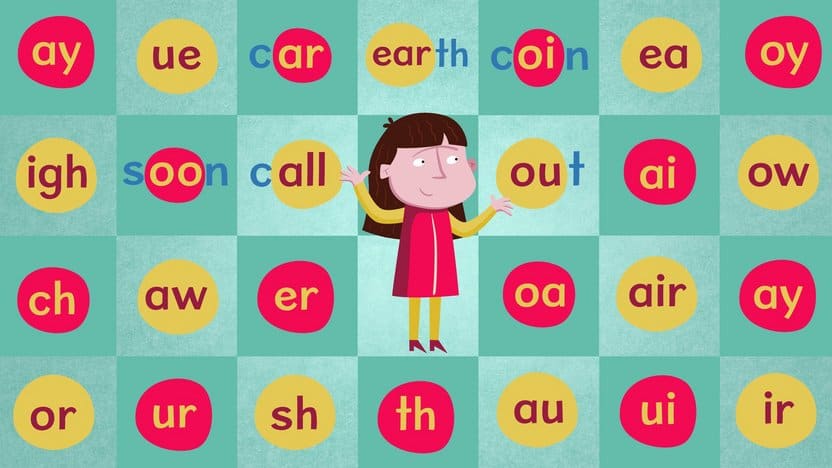Unlock the Magic of Words: A Parent’s Phonics Guide!
Hey there, awesome parents! Are you ready to dive into the enchanting world of phonics with your little learner? Phonics is like a secret code that makes understanding the relationship between letters and sounds as fun as a treasure hunt. By cracking this code, children can begin to read confidently and develop a lifelong love of books! In this friendly, comprehensive guide, we’re going to explore the ABCs of phonics to help your kiddo blossom into a reading superstar!
What Exactly is Phonics?
Let’s start with the basics. Phonics is a method of teaching reading and writing by developing the ability to hear, identify, and manipulate phonemes—the smallest units of sound that can differentiate meaning in a language. Think of it as the building blocks for reading and spelling. With a strong phonics foundation, your child will be able to connect sounds to letters, which is the first step towards fluent reading.
Why is Phonics So Important?
Phonics is incredibly important because it lays the groundwork for reading success. It helps young readers understand how words are constructed, which can improve reading comprehension and speed. Plus, it’s a huge confidence booster! When kids can decode words on their own, they’re more likely to develop a love for reading, and that’s a gift that lasts a lifetime.
Understanding Phonics Terms
Let’s get to know some of the terminologies you’ll encounter on your phonics journey:
- Phoneme: The smallest sound unit in a language that can distinguish one word from another. For example, the word ‘bat’ has three phonemes: /b/ /a/ /t/.
- Grapheme: The letter or group of letters that represent a phoneme. It’s the written representation of a sound.
- Blend: When two or more consonants are combined, and each sound is heard, like the ‘bl’ in ‘blow’.
- Diagraph: A pair of letters that make just one sound, such as ‘ch’ in ‘cherry’.
- Phonics Decodable Words: Words that can be read by applying phonics rules, also known as “sounding out.”
Creating a Phonics-Friendly Home
Making your home a hub for phonics fun is easier than you might think! Here are some quick tips to get you started:
- Read Aloud Every Day: Make time to read with your child daily. Choose books with simple text that encourage your little one to follow along and sound out words.
- Phonics Games: Turn learning into playtime! Use flashcards, apps, or board games designed to reinforce phonics rules and make learning to read a blast.
- Label Everything: Help your child connect the dots between objects and words by labeling items around your home. This visual aid is a great way to reinforce word recognition and spelling.
- Encourage Writing: Have your child practice writing letters and words. This hands-on approach can help solidify their understanding of phonics and letter-sound relationships.
Embarking on the phonics adventure can bring so much joy to you and your child’s educational path. It’s not just about learning to read – it’s about opening up a world full of stories, information, and endless possibilities. Stick with us, and you’ll be there cheering on your child’s phonics parade in no time!
Stay tuned as we continue to explore practical strategies and fun activities to boost your child’s phonics skills. Let’s turn those adorable babbles into fabulous words, one phoneme at a time!

5 Things Parents Should Know in Preparing for Phonics
As you set the stage for your child’s reading journey, it’s vital to be well-prepared. Here are five essential pointers to keep in mind:
1. Start with the Sounds
Before they can match letters to sounds, children need to be able to recognize the sounds themselves. Spend time with your little one playing listening games, singing nursery rhymes, and focusing on the sounds that make up words. This auditory groundwork is crucial in their phonics education.
2. Embrace Multisensory Techniques
Kids learn best when they can engage multiple senses. Trace letters in sand, use foam letters in the bath, or find apps that allow for tactile interaction. These strategies help solidify the connection between letters and sounds in a child’s brain through different sensory pathways.
3. Consistency is Key
Routine matters in learning. Set aside regular, short periods each day for phonics activities. Consistency helps build familiarity and confidence, making the learning process smoother and more enjoyable for your youngster.
4. Patience and Praise Go a Long Way
Every child learns at their own pace, and phonics is no different. Show patience as they grow their skills and shower them with praise for their efforts. Celebrating small victories motivates them to keep trying, even when they face challenges.
5. Connect Phonics to Real Life
Phonics isn’t just a classroom activity—it’s a tool for life. Point out words on signs, menus, and stores. Read age-appropriate books that highlight phonics patterns. By connecting phonics to everyday life, you reinforce its relevance and utility, making learning meaningful for your child.
Incorporating these strategies into your home can significantly enhance your child’s phonics learning experience. Remember, fostering a fun and supportive environment can help your child make the most of their phonics discovery journey.
The Power of Phonics in Action
Now let’s look at how to apply phonics knowledge. When you’re helping your child learn to read, it’s important to focus on:
- Sound Out Decodable Words: Encourage your child to sound out simple, short-vowel words such as “cat” or “dog”. This builds confidence and reinforces the rules of phonics.
- Master High-Frequency Words: There are words that your child will see often, such as “the”, “and”, and “it”. While they may not always be phonically regular, knowing them by sight will help your child read more smoothly.
- Progressive Challenges: Gradually increase the difficulty level of the words and texts as your child becomes more proficient. Introduce longer words and those with more complex sound patterns, like blends and diagraphs.
- Play with Language: Encourage your child to play with words; rhyming games, tongue twisters, and creative writing can all be part of the phonics learning process.
- Keep it Balanced: While phonics is important, it’s one piece of the literacy puzzle. Make sure to include comprehension questions and discussions about the text to develop a well-rounded reader.
By understanding these foundational areas and ensuring your child gets plenty of practice with each one, you’ll help them develop a robust set of reading skills. Just imagine the joy you’ll both feel when you hear them read their first sentence independently! So flash those fabulous smiles, give out those high-fives, and get ready for a fun-filled phonics adventure with your mini word-whiz!
And never forget the ultimate goal: to instill a love of reading that will enrich your child’s life forever. Phonics is the path, and a world of wonderful stories is the destination. Ready to get started? Let’s go, phonics buddies!
Get those phonemes ready, put your reading hats on, and watch as your child begins to flourish in their literary world. From environmental print to bedtime stories, every word they see and hear is a new opportunity to learn, grow, and love the language. Here’s to your family’s phonics-filled future—happy reading!
For more great fun click here. For more information see here
Disclaimer
The articles available via our website provide general information only and we strongly urge readers to exercise caution and conduct their own thorough research and fact-checking. The information presented should not be taken as absolute truth, and, to the maximum extent permitted by law, we will not be held liable for any inaccuracies or errors in the content. It is essential for individuals to independently verify and validate the information before making any decisions or taking any actions based on the articles.




